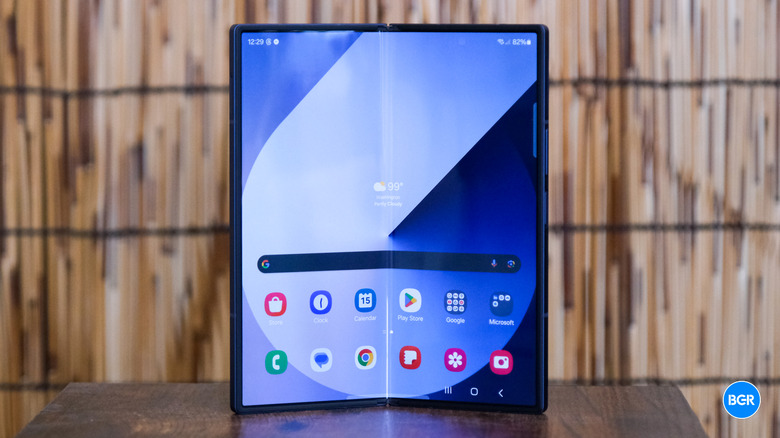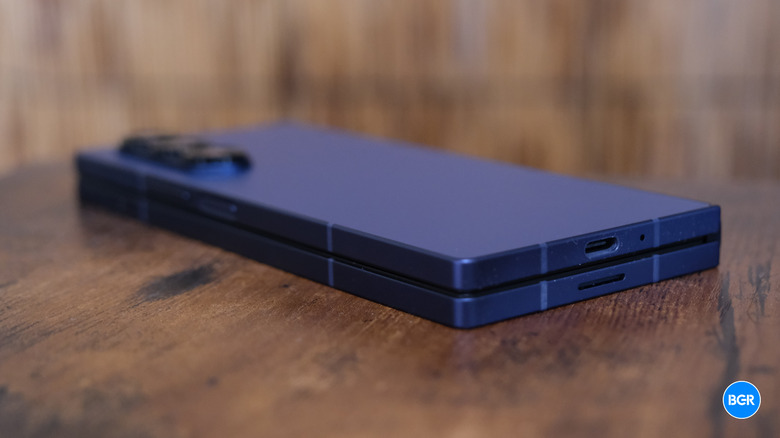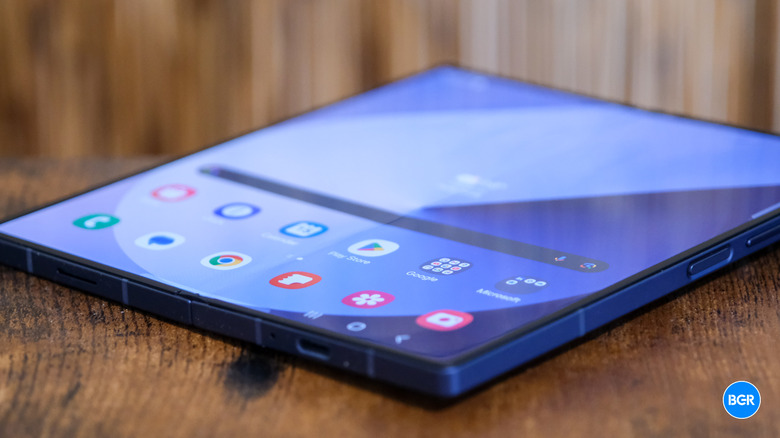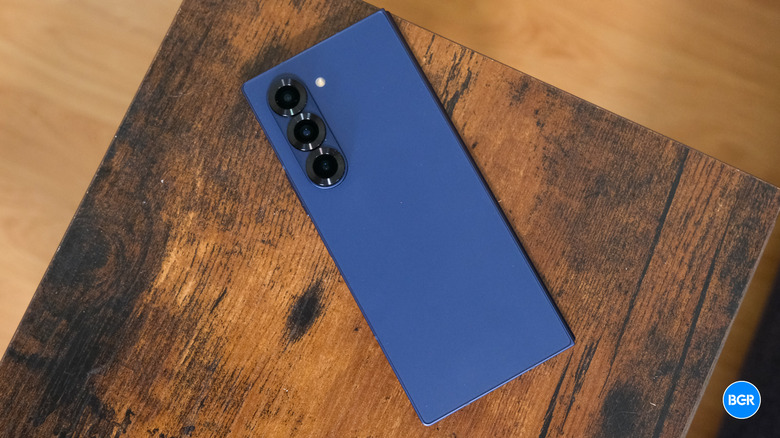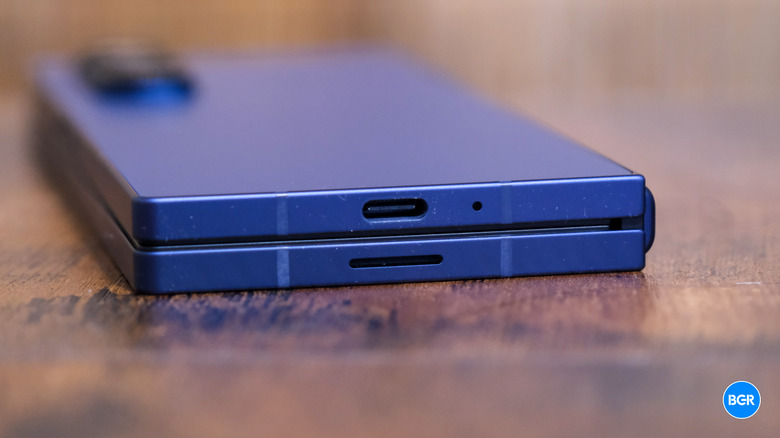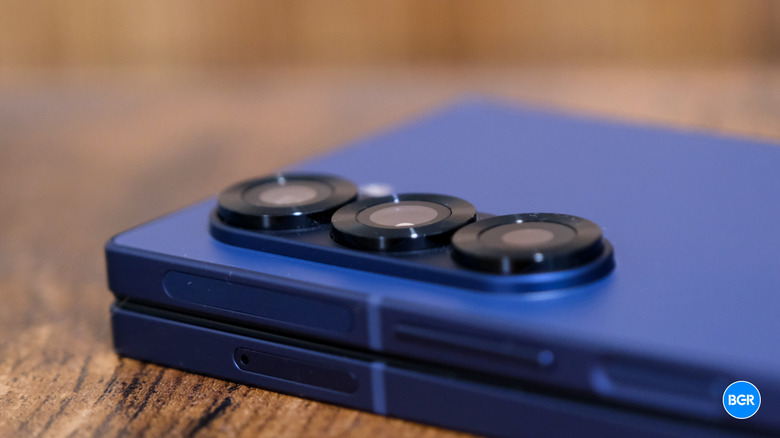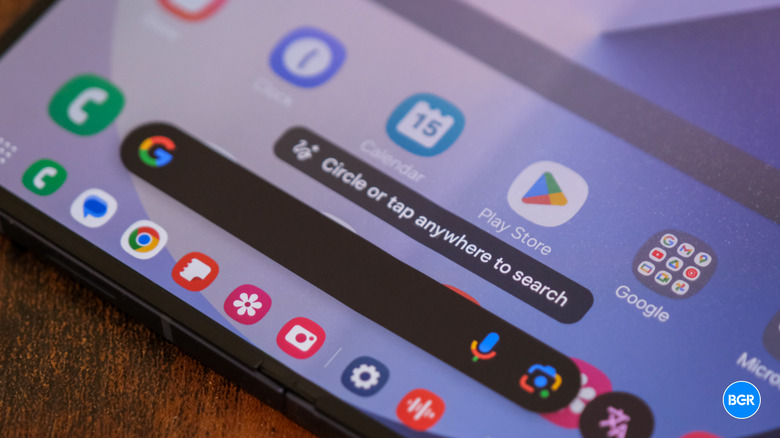Samsung Galaxy Z Fold 6 Review: Inching Slowly Towards Perfection
- Slimmer, refined design
- Solid battery
- Great camera
- Stunning displays
- Top-tier performance
- Even more expensive
| Buy From | List Price | Sale Price | |
|---|---|---|---|
| Amazon | $1,899.99 | $1,899.99 | See It |
We may receive a commission on purchases made from links.
If you're at least partially invested in the Samsung ecosystem of devices, you've probably seen headlines about how, for the Galaxy Z Fold 6, Samsung is once again only iterating to a minor extent. I get the criticism. At first glance, the Samsung Galaxy Z Fold 6 looks very similar to the Z Fold 5 before it. And on paper, there are almost no major changes to the device.
But that criticism ignores something essential: Iteration leads to perfection, and unless you literally buy a new phone every year, those iterations can build up to meaningful updates.
I'm not saying that the Galaxy Z Fold 6 is perfect. Far from it. There are still some major ways in which Samsung could improve on its flagship foldable device. There are also some ways in which the competition is still ahead of Samsung. That's not to mention the fact that for this year, Samsung has raised the price of the Z Fold — yes, in a year where Samsung made no major changes to the Galaxy Z Fold 6, it decided to raise prices to $1,900 for the base model of the phone. And because of it, I was prepared for this review to be highly critical of the Z Fold 6.
But after using the Samsung Galaxy Z Fold 6 for a while now, I'm finding it a little hard to argue too much against the device. Is it the clear, best foldable phone out there right now? No. And in fact, there are plenty of people who should stick to a device like the OnePlus Open.
But Samsung has gotten very close to perfecting the Samsung take on a foldable phone.
Samsung Galaxy Z Fold 6 specs
| Dimensions | 153.5 x 132.6 x 5.6 mm |
| IP rating | IP48 |
| Display resolution | Exterior: 968 x 2376 pixels Interior: 1856 x 2160 pixels |
| Display size | Exterior: 6.3 inches Interior: 7.6 inches |
| Display type | LTPO AMOLED |
| Display refresh rate | 120Hz |
| Display brightness | 2600 nits (peak) |
| Chipset | Qualcomm Snapdragon 8 Gen 3 |
| Memory | 12GB |
| Storage | 256GB, 512GB, 1TB |
| Rear cameras | Wide: 50MP, f/1.8 Ultrawide: 12MP, f/2.2, 123-degrees Telephoto: 10MP, f/2.4, 3x optical zoom |
| Video | 8K at 30fps, 4K at 60fps, 1080p at 240fps, 720p at 960fps |
| Front cameras | Exterior: 10MP, f/2.2 Interior: 4MP, f/1.8 |
| Ports | USB-C |
| Battery size | 4,400mAh |
| Charging | 25W wired, 15W wireless, 4.5W reverse wireless |
| Connectivity | Bluetooth 5.3, Wi-Fi 6e, 5G |
| Colors | Navy, Silver Shadow, Pink, Black, White |
| Price | $1,899.99 |
Thinner, even more premium build
The improvements to the Galaxy Z Fold 6 over the Galaxy Z Fold 5 start with the design. Again, at first glance, the Galaxy Z Fold 6 is incredibly similar to its predecessor. But the minor changes that Samsung has made here add up to one of the most premium-feeling phones out there right now.
Much of that comes down to the fact that the device is thinner than before. It's certainly not dramatically thinner. It's only around half a millimeter thinner when unfolded. But when folded, that adds up to around a millimeter, and in the world of ever-slimming smartphones, that's actually kind of a big deal.
I know what you're thinking — "but what about the Honor Magic V2?" I reviewed the Magic V2 and found its thinness to be incredibly appealing, and to be clear, the Galaxy Z Fold 6 isn't as thin as the V2 is, and the V3 will be when it's finally released. But while I didn't have a Galaxy Z Fold 5 on hand during testing of the Fold 6, I found the Z Fold 6 to feel much thinner in the hand than I remember the Z Fold 5 feeling, especially when folded up.
It feels a little thinner than the OnePlus Open, too, perhaps thanks to the much smaller camera module on the back or the narrower build. To be clear, the Open is actually thinner than the Fold 6, but only slightly.
There are other design changes this year. Perhaps the second biggest change in design comes in the form of the less rounded, more square corners. Before getting my hands on the Galaxy Z Fold 6, I thought I would find this change to be a downgrade, but on the contrary, I really like it. It helps make the Z Fold 6 feel almost Note-like, which is helpful for a phone that's arguably built for productivity. Typically, I like more rounded corners — but here, the change in the opposite direction looks and feels great.
I really like the matte finish on the back and frame of the Galaxy Z Fold 6 too. The back of the Galaxy Z Fold 5 had this, and it feels quite nice. No matter where you get the phone, you'll be able to get it in Pink, Navy Blue, or Silver Shadow. However, if you order from Samsung's website, you'll also be able to get it in Crafted Black or White. I'm reviewing the Navy Blue model, and I really like the Navy color. Having seen all of the color options at a Samsung event in New York, I think the Navy Blue is my favorite.
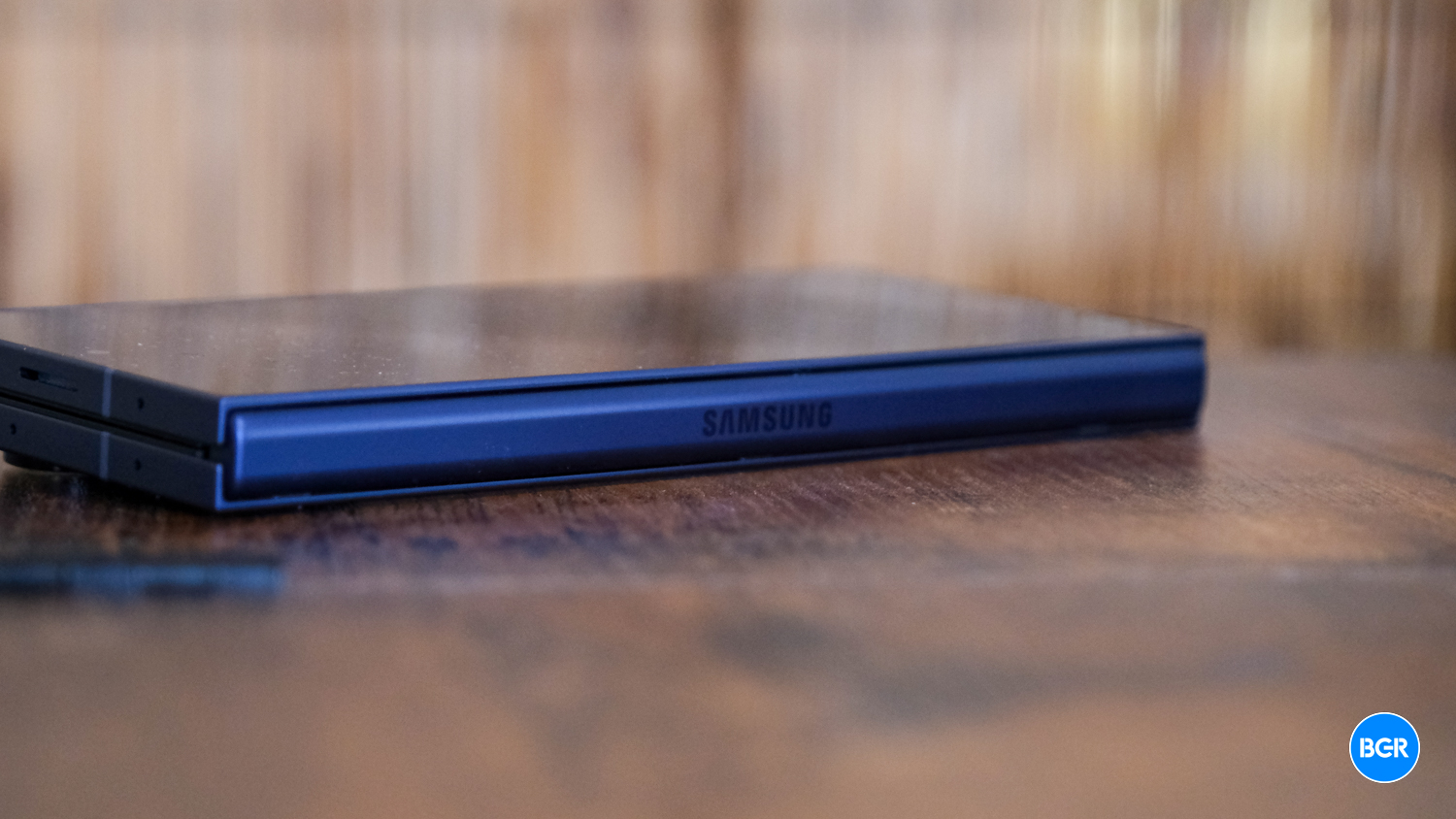
The rest of the phone is more or less what you'd expect. There's a USB-C port on the bottom of the device when it's unfolded, along with a volume rocker and power button on the right edge. On the back, there's a vertically aligned triple camera array that looks more or less the same as last year.
As a whole, the Galaxy Z Fold 6 may feel iterative, but the design changes to the phone are welcome improvements. Some still find that the device is too narrow to really use the cover display for more than just the basics. And to a certain extent, I agree, especially when compared to a phone like the OnePlus Open. However, I really appreciated being able to use the cover display with one hand and found that the keyboard wasn't too small to type on when doing things like texting. Maybe I just have dainty fingers.
Unsurprisingly stunning screens
Samsung always puts super high-end screens on its flagship phones, and the Galaxy Z Fold 6 is no exception to this rule. The Z Fold 6 keeps a 7.6-inch LTPO AMOLED display on its internal screen, with its 120Hz adaptive refresh rate and 2160p resolution. But it's also way brighter, supporting a peak brightness of 2600 nits, compared to 1750 nits on the Galaxy Z Fold 5. Indeed, the screen looks stunning. It's smooth, bright, and vibrant. Again, I'm not surprised.
The cover screen is quite similar to before, but again, that's not a bad thing. It's also an LTPO AMOLED display with an adaptive refresh rate, and sits in at 6.3 inches. It doesn't quite get as bright at 1600 nits peak, but I still find it bright enough for the vast majority of use cases, even in outdoor use.
Generally, I do prefer a slightly wider, slightly shorter cover screen like that found on the OnePlus Open. That's largely due to the fact that I tend to use the cover screen more than the internal display, really only opening up the phone for things like playing games and watching videos. Essentially, I find that I use the cover screen for more tasks, but the tasks for which I use the internal screen benefit more from a high-quality display. But, as mentioned, I still really liked the general size of the Galaxy Z Fold 6 and appreciated how easy it was to use with one hand.
Productivity-tier performance
The new phone also gets a new chipset in the form of the Qualcomm Snapdragon 8 Gen 3 processor. It's an expected change and brings modest performance improvements to the new device, keeping its performance at the highest level of Android phones. That chipset is coupled with 12GB of RAM, allowing the phone to handle heavy multitasking with ease.
Unsurprisingly, I found the phone to be an excellent performer and found that it was able to handle everything I could throw at it, from multitasking to gaming. I never experienced stuttering or freezing of any kind.
These days, when it comes to flagship phones, I find discussions around performance to be a little tricky. That's because all modern flagship phones perform excellently, and they can all more or less handle the same tasks. Better performance is more important down the road, as operating systems get more advanced and apps get more complex. Indeed, it will be interesting to see how the Galaxy Z Fold 6 holds up, given the fact that Samsung is promising a hefty 7 years of Android updates. That, however, isn't something we can test for this review.
Here are the benchmark results we achieved on the Samsung Galaxy Z Fold 6.
- GeekBench 6: 2251 single-core, 7102 multi-core
- 3DMark Wild Life Extreme: 4796
These are great results and make for a device that's at the top of the game right now.
Solid battery and versatile charging
Unlike the new Galaxy Z Flip 6 that has a larger battery, the Galaxy Z Fold 6 has the same battery size as last year. That's not really a huge deal. I found the Galaxy Z Fold 5's battery to be easily good enough for the vast majority of use cases, especially considering, as mentioned, I use the cover display more often than the internal screen. The Galaxy Z Fold 6 has a 4,400mAh battery, and most will find it to last through a full day of use, though depending on your usage, perhaps not much into a second day. I ended a full day of using the device with around 30% of the battery remaining.
The charging tech on offer isn't bad. The phone supports 25W wired charging, which is a little slow compared to much of the competition that supports charging at over 60W these days. With Quick Charge 2.0, you'll be able to get the phone to 50% battery in 30 minutes, however you'll need a Quick Charge 2.0 charger, and there's no charger in the box. I hope Samsung improves its wired charging speeds at some point in the near future, especially considering the fact that its own Galaxy S24 Ultra can charge at 45W.
The device does have 15W wireless charging; however, you'll only achieve those speeds if you use a Samsung wireless charging pad — and if you use a traditional Qi charger, you'll be limited to 7.5W. Unfortunately, the phone does not support the new Qi2 wireless charging standard, which is a little disappointing to see. I hope Samsung adopts the new magnetic standard across all of its devices for its next generation of phones.
As expected, the phone also supports 4.5W reverse wireless charging, which is a handy feature that allows you to charge things like wireless earbuds on the back of the phone. You can't charge your Galaxy Watch 7 or Watch Ultra on the back, though, as those devices use a proprietary charging standard.
Stunning camera, but not quite the best
For all intents and purposes, the camera on the back of the Galaxy Z Fold 6 is the same as that on the Galaxy Z Fold 5. Technically, the device has a new ultra-wide camera sensor. However, its specifications are the same, and it will perform similarly.
The triple camera array on the back of the phone is made up of a 50-megapixel main camera with an f/1.8 aperture, a 10-megapixel telephoto camera with an f/2.4 aperture and 3x optical zoom, and a 12-megapixel ultra-wide camera with an f/2.2 aperture and a 123-degree field of view.
It's a good selection of cameras; however, it does look a little weak next to the much cheaper Galaxy S24 Ultra, which has the best cameras in a Samsung device right now. Considering the price of the Galaxy Z Fold phones, I would really like to see Samsung build its highest-end cameras into the device.
Again though, the camera on the Galaxy Z Fold 6 is quite good. In well-lit environments, the camera was able to capture bright and vibrant images with solid detail and relatively accurate color reproduction. The phone technically only has up to 3x optical zoom, but I found that images zoomed up to 5 or 6x still looked natural and detailed. The device also handles dynamic range very well. And it seems like images are more natural-looking than they were on the Galaxy Z Fold 5, despite offering mostly the same camera technology. This is likely largely due to improved image processing.
In darker environments, the phone captured great photos too. Images still remained relatively detailed, without getting blurry, except in the most extreme scenarios.
So what makes the camera on the phone not the best? Well, unlike the Galaxy S24 Ultra, the Galaxy Z Fold 6 doesn't have a secondary periscope telephoto camera for higher levels of optical zoom or lossless sensor-cropped zoom, and the phone doesn't have the 200-megapixel main camera that delivers things like improved details and better photos in low light. I would love to see these things come to the Fold very soon — but rest assured that you're still getting a very high-end camera on the Galaxy Z Fold 6.
There are two front-facing cameras on the device. There's a 10-megapixel camera on the front of the cover screen, along with a 4-megapixel under-display selfie cam in the internal screen. Obviously, the selfie cam on the main screen is quite a bit better than that under the cover display — under-display cameras are getting better, but they still have a long way to go. The in-display camera on the Galaxy Z Fold 6 will do just fine for things like video calls, but you should avoid using it for selfies.
It wouldn't be a 2024 smartphone launch without a series of new AI-based camera features. These features run relatively deep. For starters, the Galaxy Z Fold 6 has a new AI-powered ProVisual Engine, which Samsung says uses the AI chip to better understand the image and optimize colors accordingly.
There are some more user-facing features too. For example, the device has a new sketch-to-image feature that lets the user draw a crude sketch of the image they're looking for and then have the phone turn it into something a little more convincing. There's also a portrait studio feature that allows the user to turn a portrait mode image into a 3D cartoon or sketch, or to add cartoon elements to a photo. It often doesn't produce the images that I intended — but it was still fun to play around with.
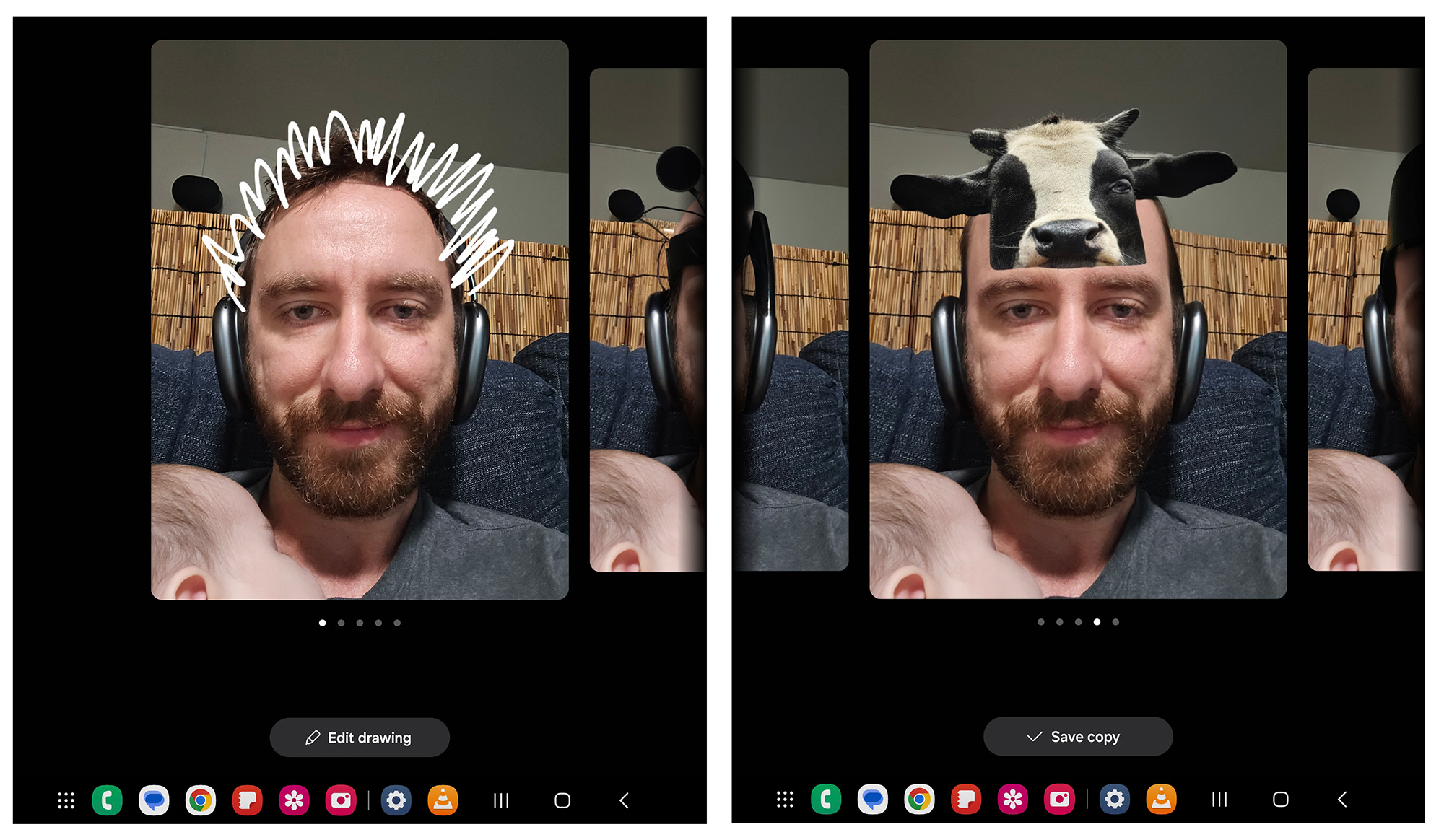
I'm not generally one to regularly use AI image features, even for things like object removal, but I did find some of the sketch tools on the phone to be fun. For example, it was fun to sketch out additions to a photo and have the phone add more realistic versions of those sketches to an image.
The phone has some pretty helpful video-related AI features, but not necessarily too many that are new for the Z Fold 6. One feature that I really appreciate is the ability to turn videos shot in 30 frames per second to slow-motion videos. Samsung does this by using AI to add in frames between those actually shot by the camera, and it works very well. Again, it's not new to the Galaxy Z Fold 6, but a super cool feature nonetheless.
Productivity-first software
The Samsung Galaxy Z Fold 6 comes with Samsung's One UI 6.1. As a result, it looks and feels like other Samsung phones but has a range of big-screen-specific features for things like multitasking and productivity.
I've never been the biggest fan of One UI — however, I do get the appeal. If you're used to using Samsung phones, you'll find it well-designed and easy to navigate, and everything is more or less where you would expect it to be. If you've never used a Samsung phone before but you do use Android, you'll still find it relatively easy to use. As before, the phone allows you to open up a number of different apps at a time, with tools like split screen, a pop-up window, and more. Those actually looking for a productivity machine will appreciate these features — however, I do still really like the OnePlus Open's triple-split feature, which has a third split-screen window available with a simple tap.
There are tons of AI-based features beyond those found in the camera and gallery too. For example, there's a new Note Assist feature in the Samsung Notes app that allows for simple translation and summaries from meeting notes. That's on top of the ability to translate text in PDF files and in images, and a new Composer feature in the Samsung keyboard that can generate text based on keywords. These are all features that you could find useful if you regularly use them and incorporate them into your normal workflow. However, in the beginning, you will have to force yourself to remember to use them — otherwise, you'll likely forget that they exist. And these tools still weren't perfect. For example, the text-to-speech AI feature in the Voice Recorder app wasn't great at adding correct punctuation and grammar.
For most users, One UI on the Galaxy is simply a great operating system for productivity. Again, you'll have to decide you want to use AI features — but that is slowly starting to change as things like AI slow-motion start to come into play.
Conclusions
The Samsung Galaxy Z Fold 6 is a stunning foldable device. It doesn't reinvent the wheel, but it builds on previous-generation phones with some meaningful improvements like a slimmer, more refined build, better performance, and some software improvements. You don't need a Galaxy Z Fold 6 if you have a Z Fold 5, and it's a little frustrating that Samsung has decided to raise the price of the device. But the fact remains that the Galaxy Z Fold 6 is a well-rounded, top-tier foldable phone that proves that foldable devices, in general, are ready for the mainstream.
The competition
The biggest competition to the Galaxy Z Fold 6 right now is the OnePlus Open, which is a little wider and shorter than the Samsung device, but still offers flagship-tier performance and some great software features. On top of that, the Open has a slightly more well-rounded camera and comes at a lower price. That said, plenty of people vastly prefer Samsung software, and I do prefer the build quality of the Z Fold 6 a little. Most should probably save their cash and go for the OnePlus Open, but if you like Samsung's approach to software and build better, the Galaxy Z Fold 6 is still an excellent phone.
Should I buy the Samsung Galaxy Z Fold 6?
Yes. You should also consider the OnePlus Open, but the Galaxy Z Fold 6 is an excellent phone.
